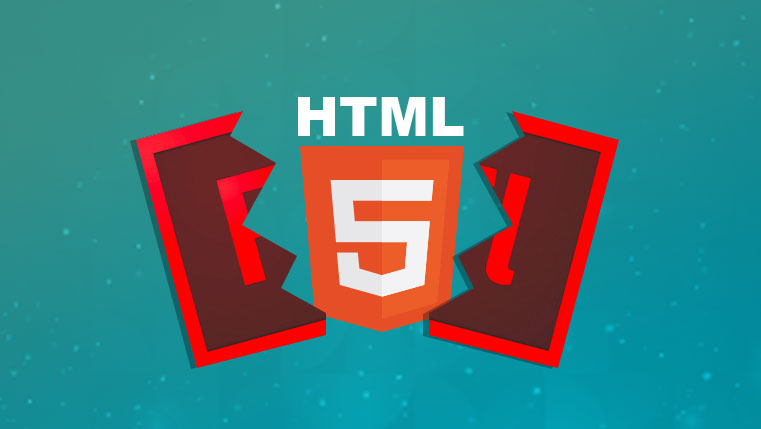4 Popular Authoring Tools to Facilitate Flash to HTML5 E-learning Conversion

With the support for Flash on browsers being phased out, organizations that wish to convert their legacy courses to HTML5 must be very careful in selecting the right authoring tool.
Popular Authoring Tools to Convert Flash to HTML5
- Articulate Storyline
- Adobe Captivate
- Lectora Inspire
- iSpring Suite
The choice of authoring tool depends on various factors, including:
- Type of content in the e-learning course
- Cost of authoring tool
- Availability of technical expertise
- Scalability and translation requirements
There are a few popular authoring tools an organization can consider for the effective conversion of Flash courses to HTML5 namely:
1. Articulate Storyline
Articulate Storyline is an authoring tool that offers an easy learning curve, and its ease of use makes it an attractive investment, especially for organizations planning to make use of an in-house team for the rapid conversion of e-learning courses from Flash to HTML5.
Earlier versions of the tool used vector shapes to display fonts, and this resulted in blurring of content when viewed on web browsers. However, in its later versions such as Storyline 360, the new HTML5 output offered by the tool ensures content looks great, irrespective of the device used to view the e-learning course.
One of the excellent features offered by Articulate Storyline is its ease of customization. Compared to other authoring tools available in the market, Articulate Storyline offers a host of interactivities such as interactive sliders and dials, which are yet to be featured in other popular authoring tools. Also, the content library in Storyline offers a host of characters and royalty free images and icons that are hard to come by in other tools.
Articulate Storyline gives developers a chance to build Flash-like interactivities, if not exactly the same. For example, a complex animation in Flash which has a lot of branching and uses action scripts cannot be converted as is onto a single slide, using Storyline. But Storyline does offer alternate options to represent the content in multiple slides.
Also, compared to a tool such as Adobe Captivate that allows only one developer to work on the conversion at a particular instance, Storyline allows multiple developers to work on the same project.
However, a drawback developers working on the tool have faced is the lag of HTML5 content performance on iPads.
2. Adobe Captivate
E-learning courses that are simulation-based benefit from using Adobe Captivate as the authoring tool. Adobe Flash was quite popular for its capability to design simulations, especially in software training. A conversion of simulation-based e-learning courses from Flash to HTML5 would work well using Adobe Captivate, although the learning curve is considered to be steep compared to Storyline.
E-learning developers using Captivate to convert Flash files to HTML5 output may find that certain features that work well in SWF (Flash) output may not work in HTML5. Adobe Captivate offers a HTML5 Tracker that lists all the problems encountered in the Flash to HTML5 conversion process on a slide by slide basis. This allows developers to look for workarounds to resolve the problems.
The tool’s latest version, Adobe Captivate 2017 offers features such as Fluid Boxes and text scaling that takes responsive design to the next level. The need to build the course in different breakpoint views is done away with, as the Fluid Box feature ensures that the design of the content adapts to every device, right from desktops to smartphones and tablets. The process of conversion from Flash to HTML5 is completed in minimal steps with the latest features available in Adobe Captivate.
One flipside to using Adobe Captivate is that the tool does not offer as many interactivities and animation effects as other tools. In case of Flash to HTML5 conversions that include translation projects, there might be a need to reconsider the usage of this tool as support for e-learning translations is not one among the tool’s strongest features.
3. Lectora Inspire
Lectora Inspire is a tool that’s versatile enough to handle various kinds of Flash to HTML5 conversion projects, depending on the need. The tool can be used to create content as simple as a quiz to a more complex branched scenario. Flash courses that have a lot of onscreen content can be converted using Lectora, as the tool offers support for text-heavy content. A slide created in Lectora offers the option of a scroll bar that can accommodate more content on the screen. This is not a feature offered by other authoring tools.
Lectora Inspire is also ideal for translation projects as it can be customized to offer a switchable interface. Consider the example of an organization that wants its employees to select their preferred language before going through the e-learning course. Lectora can be used to provide a switchable interface that lets learners select their preferred language for the e-learning course.
According to some developers, Lectora may have a learning curve that’s steeper than the one for Adobe Captivate. Also, the quality of simulations is not as effective as compared to other authoring tools.
4. iSpring Suite
Legacy training programs that use PowerPoint presentations can be quickly converted to HTML5 output using iSpring Suite. The e-learning courses are accessible on multiple devices and ready-made templates can be leveraged to deliver visually appealing courses. Video narrations can be synchronized with e-learning slides and the tool’s dialogue simulation and screen-recording features can be made efficient use of. All PowerPoint animations and slide transition effects are preserved exactly as they are in the original PowerPoint Presentation, even after conversion to HTML5 output.
However, the main drawback with iSpring is that it relies completely on PowerPoint as it is available as an add-in for PowerPoint.
The choice of authoring tool is dependent on what is a priority for the organization’s Flash to HTML5 conversion project. Before kicking off a Flash to HTML5 conversion project, it would be ideal to make use of a checklist for effective conversion. If you are looking for more insights, our free eBook: “ Flash to HTML5 eLearning Conversion: 4 R’s that Matter ” can be of help to you. Download Now!





